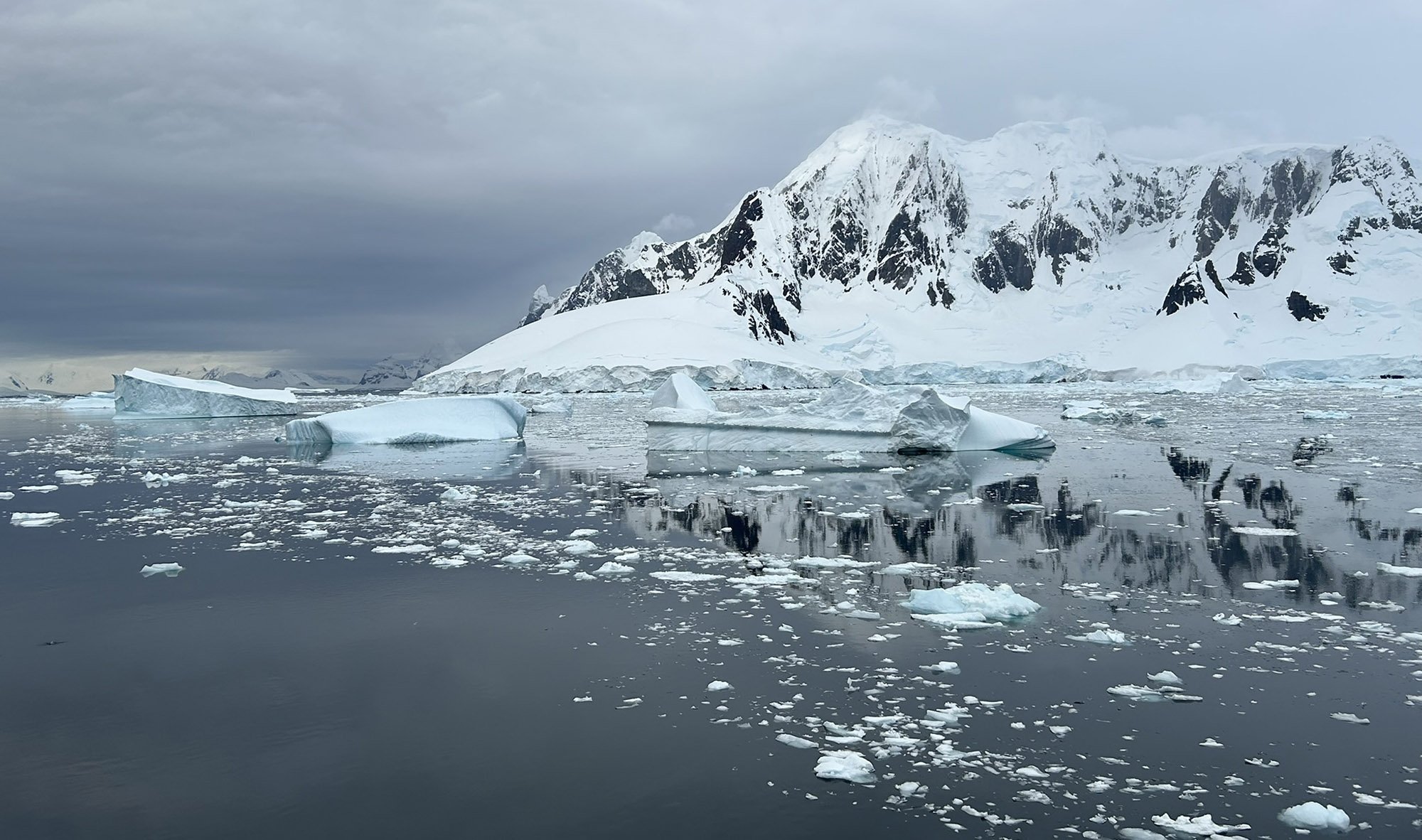
McMurdo Station, Antarctica (AP) – One of the last remaining ancient ice shelves in Antarctica is at serious risk of disintegrating, potentially as soon as within the next five years, according to alarming new findings from NASA and university researchers. The ominous outlook for the Florida-sized Wilkins Ice Shelf could spell trouble for the broader West Antarctic Ice Sheet if the warming trend vastly accelerates in the coming decades.
Earth scientists have been intently monitoring a series of deep fractures and rifts rapidly developing across the ice shelf in recent months. New radar data, satellite imagery, and analysis published this week detail the structural weaknesses that raise the likelihood of a full break-up within a 5 to 10-year timeframe.
“What we’re seeing is really quite dramatic – an existential threat to one of the Antarctic Peninsula’s last ancient ice shelves. It shows how rapidly climate change is transforming and destabilizing the Antarctic environment,” stated Dr. Helen Fricker, a glaciologist at the Scripps Institution of Oceanography who co-authored the study.
The Wilkins Ice Shelf has existed for over 100,000 years in the Bellingshausen Sea between the Antarctic Peninsula and Alexander Island. However, melting and cracking have accelerated significantly over just the past two decades due to warming temperatures in the region. In 2008 and 2009, large sections measuring around 1,200 square miles disintegrated from the shelf entirely.
Now, troubling new findings suggest the remainder of the shelf – roughly 3,800 square miles or twice the size of Delaware – may not be far behind. Radar data from the European Space Agency’s Sentinel-1 satellite revealed multiple large rifts and cracks spreading rapidly across the shelf, some over 30 miles long and 1,000 feet wide. One major rift that formed last year, dubbed “The Doomsday Fissure”, expanded over 10 miles in length in just a matter of weeks as warmer temperatures caused rapid melting.
“We’ve monitored many rifts in Antarctic ice over the years, but we’ve never seen one Opening up and traveling this rapidly before – it was quite astounding to watch via satellite imagery,” remarked Eric Rignot, a study co-author and Earth systems scientist at the University of California, Irvine.
Rising temperatures caused by human-induced climate change have already pushed Antarctica’s western region into a state of melting unlike anything in the past 5 million years, according to separate research published earlier this year. While continental ice loss has occurred naturally during cyclical warm periods in the past, the pace and magnitude of current melting shows no signs of slowing absent major reductions in greenhouse gas emissions, scientists warn.
“What we have now is really a climate trifecta triggering this potential ice shelf collapse – rising air temperatures, warming ocean waters lapping at the shelf and deeply destabilizing the entire ice mass, and a series of centrifugal fractures and rifts allowing these melting processes to progress further and faster,” said Fricker. “The data paints an extremely precarious picture.”
Ice shelves themselves don’t directly contribute much to sea level rise when they break up. However, the floating ice masses act as essential buttresses holding back the flow of land-based glaciers and ice sheets into the sea. If the Wilkins shelf were to completely disintegrate, it would remove a major impediment for upstream glaciers in West Antarctica to start sliding rapidly into the surrounding ocean, potentially within just a few years.
And because Antarctica’s western ice sheet rests on a bed sitting well below sea level, many glaciers in the region have the potential to eventually continue accelerating their melt cycles over decades, potentially raising global sea levels by 3-5 meters if the whole west sheet were to destabilize. That rise would be enough to submerge many of the world’s coastal cities and communities inhabited by hundreds of millions of people worldwide.
NASA satellite data has documented a significant uptick in West Antarctic glacial flow speeds in recent years, believed to be linked to the loss of ice shelves that previously helped contain the ice on land. Further ice shelf collapse would only exacerbate this destabilizing dynamic.
“The growing rifts in the Wilkins Shelf make it a prime candidate to be the next catastrophic ice shelf failure and the data suggests it could happen sooner than we previously anticipated,” said Rignot. “This may be just the beginning of a key environmental tipping point being passed for the broader West Antarctic ice sheet over the next couple of decades.”
The implications of such an event would be profound for coastal cities and nations across the planet, the researchers cautioned. While an outright collapse likely wouldn’t raise sea levels appreciably in the near-term, the domino effect on upstream glaciers starts what some have called the “Antarctic Armageddon” of melting and sea level rise would be incredibly difficult to halt over subsequent years and decades.
“This is why the urgency to act on climate change has never been greater,” stated Fricker. “What happens in remote Antarctica doesn’t stay in Antarctica – it affects the entire world. And now, we may be witnessing a key Antarctic tipping point being breached with the potential demise of the Wilkins ice shelf in the very near future.”
Such dire warnings about the Wilkins shelf’s stability come as Antarctic melting over the past three years has shattered all historical records. This past Antarctic summer saw temperatures skyrocket to 70 degrees Fahrenheit higher than average over some portions of the continent’s interior, sparking vast melting across the ice sheet. In March, an area of melting larger than the state of California was documented by climate scientist Dmitry Strove.
UN Secretary General Antonio Guterres cited the warming at both polar regions when he declared the world had entered “a new age of global melting” in an address to the World Meteorological Society in April. Guterres implored nations to accelerate decarbonization efforts to drastically cut carbon emissions in order to avoid destabilizing key ice systems like those in West Antarctica.
“The science is clear – any further delay in cutting carbon emissions means the meltdowns in polar ice will only accelerate globally, raising sea levels, eroding coastlines, and submerging cities around the world,” the UN chief warned. “We cannot afford to disregard the warning signs any longer – the melting Antarctic speaks loud and clear.”
Antarctic researchers say heightened observation and monitoring will continue for the remainder of 2024 to gauge whether the Wilkins shelf can survive the upcoming winter season or if fracturing and collapse has progressed too far. Multi-institutional teams have already begun advanced planning for urgent on-site surveys and data collection if the shelf’s structural integrity deteriorates rapidly in the coming months.
Environmental groups have also called for emergency international protocol and agreements to be drafted that provide a legal framework to officially declare parts of Antarctica a threatened environmental zone eligible for protective remediation measures. That could potentially open the pathway for future interventions to help shore up and stabilize key Antarctic systems before reaching irreversible melting thresholds that raise global sea levels uncontrollably.
With the future of one of Antarctica’s last ancient holdout ice shelves hanging in the balance, the world awaits with bated breath whether the ominous circumstances signal a new and accelerated era of melting on the frozen continent – one that would reverberate tsunamis of consequences worldwide.
“Once it starts, we may not be able to stop or slow down this process of meltdown, collapse, and sea level rise in West Antarctica. That’s the harsh reality of climate change tipping points we’re now up against,” said Rignot gravely. “There’s no more precious time to waste in stemming humanity’s greenhouse gas emissions and safeguarding the Antarctic environment before it’s too late.”





